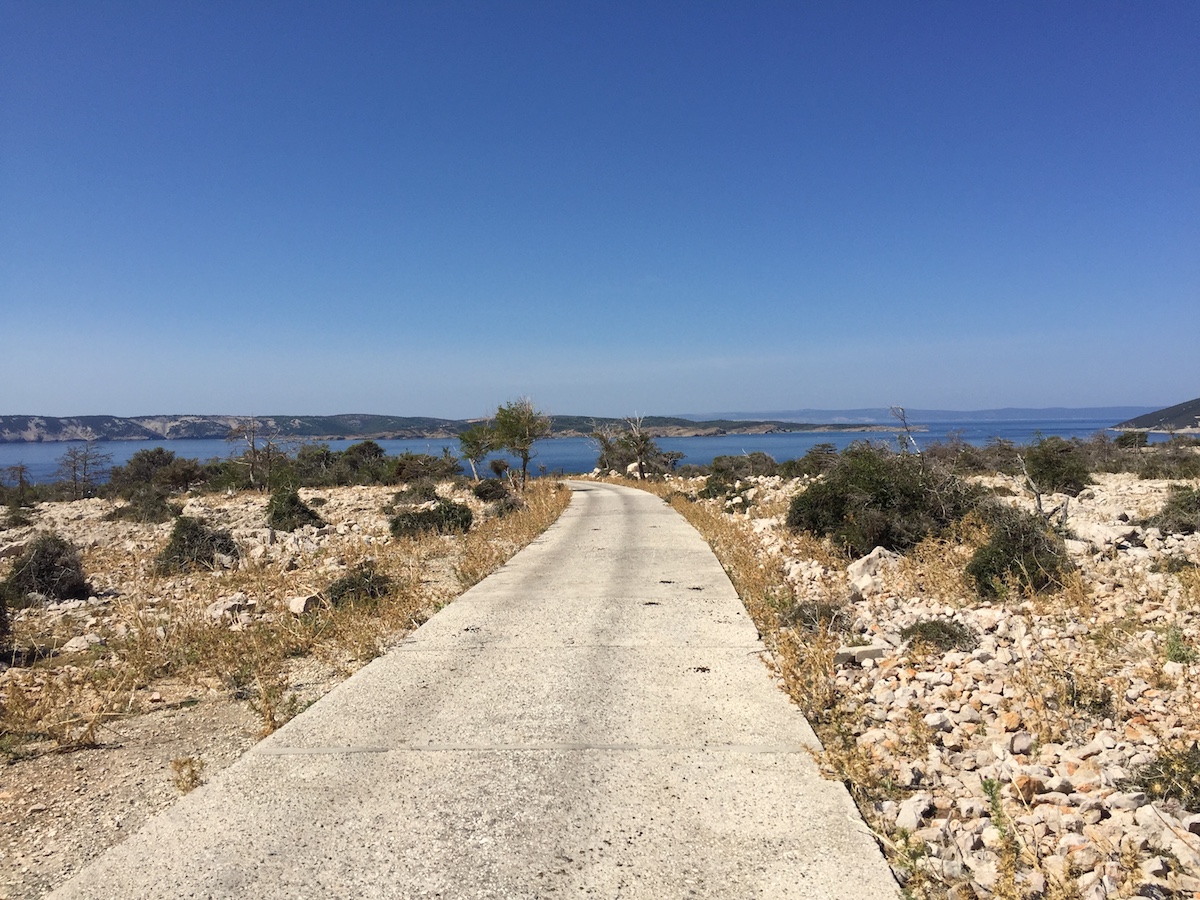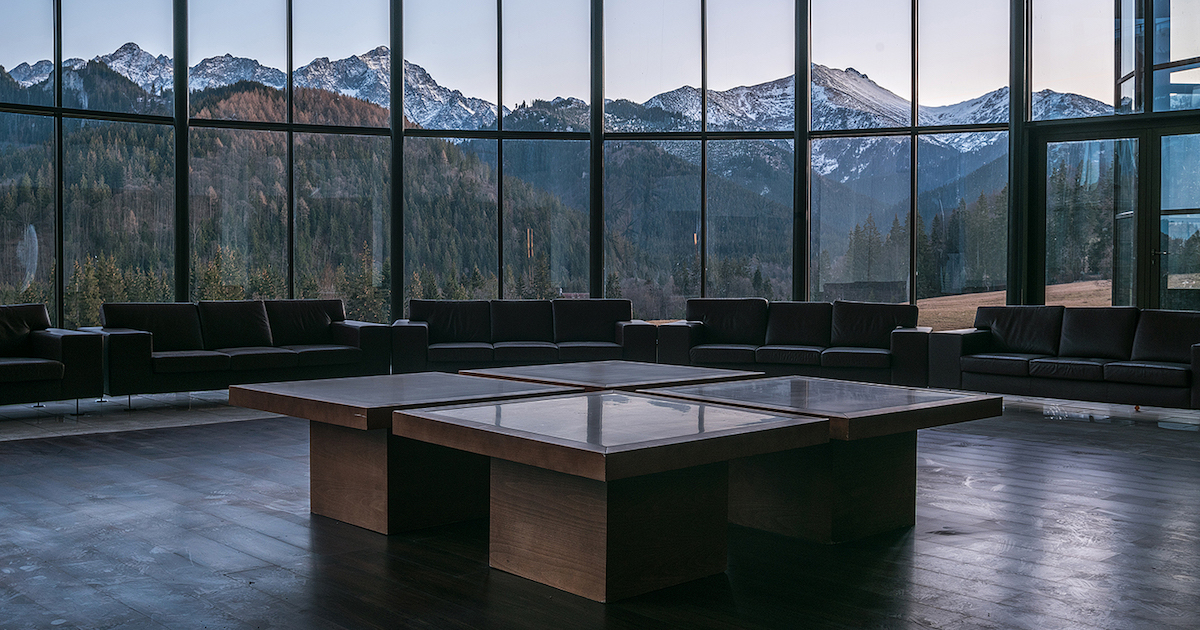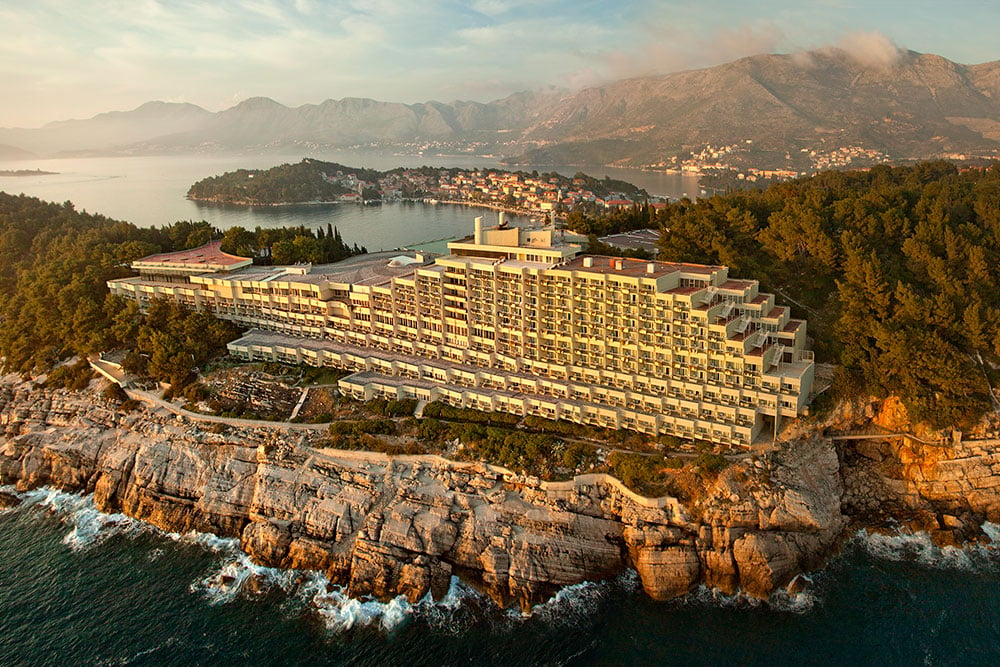Adriatic dreams: the contemporary Croatian architects building a template for modern living
Marko Dabrović of Croatian architectural partnership 3LHD is drawing me a map of Zagreb on the back of a piece of office paper. The railway line that separates the green, 19th century squares of the city centre from the brownfield expanse of the former Gredelj locomotive works is rendered in spindly black pen strokes. It’s the former factory site that Dabrović has big plans to redevelop. Raising the railway on stilts (it’s only a couple of kilometres, he says) will help create a vast walk-through city of parks and plazas shaded with trees.
3LHD’s ambitious plan for the Gredelj complex has yet to receive concrete political backing. Yet many of the company’s flights of fancy have in fact been realised both at home and abroad. From the grassed-over bunkers of the Karlovac Aquarium in Croatia, to the cruise-liner-sized bendy amoeba that is the Garden Hotel in Guangzhou, 3LHD have been consistently hired by clients who want them to make a landscapes-altering statement.
By absorbing the lessons of Yugoslavia’s hotel-building boom, 3LHD have been able to offer something radically new and authentically local
Despite their Zagreb base, 3LHD have been closely associated with the changing face of the Croatian Adriatic. They have built pedestrian bridges and sports halls in Rijeka, a redesigned waterfront promenade in Split, but are particularly celebrated for their work on astounding new hotels. In particular, they’ve drawn inspiration from an unlikely source: the Yugoslavian architects who first built the tourist infrastructure along the Adriatic coast. By absorbing the lessons of Yugoslavia’s hotel-building boom and giving them new clothes, 3LHD have been able to offer something radically new and authentically local at the same time — ensuring Croatian communities still feel at home in towns where tourists now overwhelm locals.
Comprising of Dabrović, Silvije Novak, Saša Begović and Tanja Grozdanić, 3LHD started out almost 30 years ago as a group of students collaborating on a joint competition entry to design a new hotel. When their design won, they had to form a company in order to qualify for the project. “The hotel never got built in the end,” Dabrović says, “but the company survived.” The name was a humorous way of referencing the partnership’s four founders without simply using their initials: three of them were left-handed, hence the “3L”; while only one of them knew how to operate a computer, hence the “HD” or “hard drive”.
Hotel Lone. Image courtesy of 3LHD
They first made international headlines in 2011 with their design for Hotel Lone in the Istrian town of Rovinj, a curvy white pumpkin of a building that sprouts dramatically from a wooded hillside. Commissioned by local tourism giants Maistra, the hotel consciously imitated the hotel-building culture of the 60s and 70s, when an Adriatic tourist boom led to the construction of hotels that were both architectural statements and exercises in total design, with local artists and furniture-makers providing fully-coordinated interiors. The Hotel Lone featured art installations in the lobby, staff uniforms and textiles from Croatian fashion houses, and jazzy restaurant menus drawn up by a Zagreb graphics team. With no detail left unattended, the hotel represented a conscious tip of the hat to the unabashedly modernist glory of the 1960s, when the Croatian coast served as an experimental station for Mediterranean lifestyles.
For the socialist Yugoslavia of which Croatia was then a part, hotels were promotional tools as well as places to stay, advertisements for a society that was engaged in building the future. But the fact that the state-owned concerns that built the hotels rarely had enough hard currency to pay foreign contractors was something of a blessing in disguise, turning these buildings into showcases of local talent. “We were really inspired by what was achieved as a result of being in a closed market,” Dabrović says. “Artists and designers worked together with architects to produce hotels which were totally unique.”
Characterised by a desire to place ambitiously contemporary buildings in a traditional landscape, the hotel-building boom of the 60s and 70s lost its way during the inflation-ridden 80s and war-scarred 90s. It wasn’t until the turn of the millennium that Croatia’s Adriatic tourist industry recovered, becoming vital not only to the country’s economy but also to its self-image as a Mediterranean nation with its own sense of style. And it was Croatia’s rediscovered ambition to be the brightest new kid on the Mediterranean tourist block that inspired a whole new wave in Croatian architecture.
Like their 1960s predecessors, the newest crop of designers are also keen to balance ambition with a respect for the local terrain. There is a palpable concern for the preservation of public space. Luxury holiday developments in fenced-off compounds are unpopular in Croatia, and local laws prevent developers from limiting public access to the hotel beach.
Grand Park Hotel. Image courtesy of 3LHD
“Many of the tourist hotels built in the 60s and 70s were an integrated part of the host towns,” Marko Dabrović explains. “Resort hotels had public functions, and were open to local inhabitants who were never regarded as second-class users. Hotels were an extension of public life. People would hold their high-school graduation ball in hotels; or they would hold fancy-dress parties during the carnival season. Hotel lobbies were places where locals went. This was something we wanted to achieve with the Hotel Lone in Rovinj; a public space in which you could drink a coffee without anyone wondering what you’re doing there.”
Rovinj’s Maistra group went back to 3LHD for the Grand Park Hotel, at a site opposite the belfry-sprouting Old Town. The project required the demolition of an existing hotel and its replacement with something totally new. In total contrast to old Rovinj, the new building is an angular collection of protuberances that emerge from the hillside like shards of a collapsing concrete wedding cake. As the hotel is right next to a pedestrian public thoroughfare, the reconstruction had to go hand in hand with the redesign of the public space that went with it. “With the Hotel Park we wanted to elevate the pedestrian promenade so that you could look down on the yachts. The hotel’s terraced location is something very traditional for the Mediterranean.”
Set in the open countryside, the Rimac campus, with its artificial lake, sculpted hillocks, and wildflower meadows, looks like a gilded utopia in which the future of work and the future of leisure are impossible to untwine
Other architects and artists have also been inspired by this new push to keep the Croatian coast open and accessible. Synonymous with this new spirit is Zadar-based architect Nikola Bašić, who totally repurposed a hitherto neglected stretch of the city’s waterfront with the construction of Sea Organ in 2005. Set into the city centre’s seaside promenade, the organ’s pipes rely on wave power to generate a maritime lullaby of soothing, otherworldly sounds. A few steps away from the Organ is Bašić’s Greeting to the Sun (2008), a 22-metre-in-diameter circle of miniature solar panels which absorb energy during the day and emit multicoloured light at night. Attracting all manner of strollers, dreamers, sunset-gazers and inquisitive kids, these installations have had a revolutionary impact on the use of public space. Bašić’s reputation for the landscape-changing gesture was enhanced with the opening of the wavy concrete whale that is the D-Resort hotel in Šibenik in 2015. Bašić’s latest project is the Villa Nai on the island of Dugi Otok, a luxury hotel that looks like a flying saucer buried in a hillside — a futuristic visitor set in a traditional landscape.
Architects are now looking to apply these lessons elsewhere in Croatia and abroad. Dabrović believes that the Croatian lifestyle has always felt the influence of the Mediterranean city, with its intense use of public space, squares, promenades, and waterfronts. These are characteristics which 3LHD have applied to their non-Adriatic projects too.
A rendering of the planned Rimac campus. Image courtesy of 3LHD
Currently under construction is the 3LHD-designed Zagreb HQ of Infobip, the Croatian IT start-up that rose to become the country’s first startup “unicorn”. They have also been commissioned to design a new campus, just outside Zagreb, for electric sports-car entrepreneur Mate Rimac, a globally-recognised innovator who has become something of a symbol for the country’s creative potential. Comprising an irregularly-shaped, organic-looking factory building where the cars will be made, an adjacent block housing offices and research labs, and a landscaped park with artificial lake, the aim, according to Dabrović, is to “humanise the factory environment” and produce a working environment which is “effortless and intuitive” to use.
Much of what they hope to achieve in these projects can be seen in 3LHD’s own studio, a converted cinema in central Zagreb which has a floor of office space inserted right under the barrel ceiling, and space for cultural events and a café below. The fact that the café-cultural content of the building is open to the public ensures that this is not just a corporate HQ with break-time facilities for its workers, but something more complex and open-ended, a part of the neighbourhood as well as a place of work.
The studious quiet of the office is serenaded by the discreet buzzing sound of windows opening and closing in response to sensors measuring the temperature inside. Natural ventilation is used as much as possible; indeed applying the lessons of zero-energy living to corporate workspace is one of 3LHD’s main concerns. “We use top insulation materials so the buildings do not lose energy. And as a primary energy source we try to use land or sea energy instead of fossil fuels. The hotels in Rovinj use the temperature of the sea. For the Infobip building in Zagreb we drilled into the soil of the Sava river flood plain, which stays at a constant temperature of 14 degrees throughout the year,” says Dabrović.
Away from the cooling presence of the waves, the generous use of vegetation, especially roof gardens, will serve to lessen summer heat further inland. But architects also hope to promote the sense of wellbeing associated with sun-soaked resorts. Set in the open countryside, the Rimac campus, with its artificial lake, sculpted hillocks, and wildflower meadows, looks like a gilded utopia in which the future of work and the future of leisure are impossible to untwine. It will even come with a field for live animals.
“Part of the plan is to put a sheep pen in view of the campus’s relaxation areas,” Dabrović explains, “so that employees can enjoy the sight of animals running free.”


